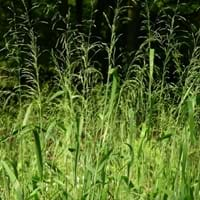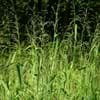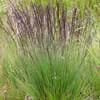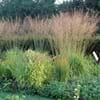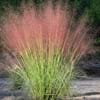Life Span
Perennial
Perennial
Origin
United States, Northeastern United States, Mid-Atlantic United States, Southeastern United States, North-Central United States, Central United States, South-Central United States, Canada
Hybrid origin
Types
Not Available
Victoria Rhubarb
Colorado Red Rhubarb
Turkish Rhubarb
Number of Varieties
Not Available
Habitat
Damp shady woods
gardens, Grassland, Humid climates, Tropical regions, Urban areas
USDA Hardiness Zone
5-9
5-8
Sunset Zone
3b, 4, 5, 6, 7, 8, 9, 14, 15, 16, 17
2b, 3a, 3b, 4, 5, 6, 7, 14, 15, 16, 17
Habit
Clump-Forming
Clump-Forming
Flower Color
Not Available
Light Pink
Flower Color Modifier
Bicolor
Not Available
Fruit Color
Not Available
Burgundy
Leaf Color in Spring
Green, Light Green
Green, Dark Red
Leaf Color in Summer
Light Green
Green, Dark Red
Leaf Color in Fall
Green, Light Green, Yellow green
Green, Dark Red
Leaf Color in Winter
Not Available
Light Green
Leaf Shape
Long Linear
Compound
Plant Season
Summer, Fall
Spring, Summer, Fall
Sunlight
Partial Sun, Partial shade
Full Sun, Partial Sun
Type of Soil
Clay, Loam
Clay, Loam
The pH of Soil
Acidic, Neutral
Acidic, Neutral, Alkaline
Soil Drainage
Average
Average
Bloom Time
Summer, Late Summer
Summer, Late Summer
Tolerances
Wet Site
Drought
Where to Plant?
Container, Ground, Pot
Ground
How to Plant?
Divison, Seedlings
Stem Planting
Plant Maintenance
Medium
Medium
Watering Requirements
Requires a lot of watering
Do Not over Water, Requires regular watering, Use Mulches to help prevent water loss during hot and windy weather, Water Deeply
In Summer
Lots of watering
Lots of watering
In Spring
Moderate
Moderate
In Winter
Average Water
Average Water
Soil pH
Acidic, Neutral
Acidic, Neutral, Alkaline
Soil Type
Clay, Loam
Clay, Loam
Soil Drainage Capacity
Average
Average
Sun Exposure
Partial Sun, Partial shade
Full Sun, Partial Sun
Pruning
Remove dead or diseased plant parts
Remove damaged leaves, Remove dead branches, Remove dead leaves
Fertilizers
All-Purpose Liquid Fertilizer, fertilize in growing season
All-Purpose Liquid Fertilizer
Pests and Diseases
Pests and diseases free, Red blotch
Red blotch
Plant Tolerance
Drought
Drought
Flowers
Insignificant
Showy
Flower Petal Number
Single
Not Available
Foliage Texture
Medium
Coarse
Foliage Sheen
Matte
Glossy
Attracts
Not Available
Not Available
Allergy
Not Available
Skin irritation
Aesthetic Uses
Ground Cover, Showy Purposes
Showy Purposes
Beauty Benefits
Not Available
Not Available
Environmental Uses
Air purification
Air purification
Medicinal Uses
No Medicinal Use
Not Available
Part of Plant Used
Whole plant
Whole plant
Other Uses
Not Available
Culinary use, Used as Ornamental plant
Used As Indoor Plant
No
No
Used As Outdoor Plant
Yes
Yes
Garden Design
Wildflower
Feature Plant, Mixed Border
Botanical Name
MILIUM effusum
RHEUM 'Ace of Hearts'
Common Name
Millet Grass, Wood Millet
Ace of Hearts Ornamental Rhubarb, Ornamental Rhubarb
In Hindi
Milium effusum
सजावटी प्रकार का फल
In German
Wald-Flattergras
Ornamental Rhabarber
In French
millet étalé
rhubarbe ornementale
In Spanish
effusum milium
Ornamental de ruibarbo
In Greek
milium effusum
καλλωπιστικά Ραβέντι
In Portuguese
milium effusum
ornamental ruibarbo
In Polish
prosownica rozpierzchła
ozdobne Rabarbar
In Latin
milium effusum
decentius Rhubarb
Phylum
Magnoliophyta
Tracheophyta
Class
Liliopsida
Not Available
Order
Cyperales
Caryophyllales
Family
Poaceae
Polygonaceae
Clade
Angiosperms, Commelinids, Monocots
Angiosperms, Core eudicots, Eudicots
Tribe
Not Available
Not Available
Subfamily
Not Available
Not Available
Number of Species
Not Available
Properties of Milium Effusum and Ornamental Rhubarb
Wondering what are the properties of Milium Effusum and Ornamental Rhubarb? We provide you with everything About Milium Effusum and Ornamental Rhubarb. Milium Effusum doesn't have thorns and Ornamental Rhubarb doesn't have thorns. Also Milium Effusum does not have fragrant flowers. Milium Effusum has allergic reactions like Not Available and Ornamental Rhubarb has allergic reactions like Not Available. Compare all the properties and characteristics of these two plants. Find out which of these plant can be used as indoor plant. If you are interested to decorate your house and garden, find out aesthetic uses, compare them and select the plant which will beautify your surrounding. Along with beautification, try comparing medicinal and edible uses of Milium Effusum and Ornamental Rhubarb and you can choose the plant having best and most benefits.
Season and Care of Milium Effusum and Ornamental Rhubarb
Season and care of Milium Effusum and Ornamental Rhubarb is important to know. While considering everything about Milium Effusum and Ornamental Rhubarb Care, growing season is an essential factor. Milium Effusum season is Summer and Fall and Ornamental Rhubarb season is Summer and Fall. The type of soil for Milium Effusum is Clay, Loam and for Ornamental Rhubarb is Clay, Loam while the PH of soil for Milium Effusum is Acidic, Neutral and for Ornamental Rhubarb is Acidic, Neutral, Alkaline.
Milium Effusum and Ornamental Rhubarb Physical Information
Milium Effusum and Ornamental Rhubarb physical information is very important for comparison. Milium Effusum height is 45.70 cm and width 45.70 cm whereas Ornamental Rhubarb height is 71.10 cm and width 81.30 cm. The color specification of Milium Effusum and Ornamental Rhubarb are as follows:
Milium Effusum flower color: Not Available
Milium Effusum leaf color: Green and Light Green
Ornamental Rhubarb flower color: Light Pink
- Ornamental Rhubarb leaf color: Green and Dark Red
Care of Milium Effusum and Ornamental Rhubarb
Care of Milium Effusum and Ornamental Rhubarb include pruning, fertilizers, watering etc. Milium Effusum pruning is done Remove dead or diseased plant parts and Ornamental Rhubarb pruning is done Remove damaged leaves, Remove dead branches and Remove dead leaves. In summer Milium Effusum needs Lots of watering and in winter, it needs Average Water. Whereas, in summer Ornamental Rhubarb needs Lots of watering and in winter, it needs Average Water.
